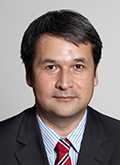MedicalResearch.com Interview Invitation
Frank Struyf MD PhD
Director, Lead Clinical Development HPV vaccines at GlaxoSmithKline Biologicals GlaxoSmithKline Vaccines,
Rixensart, Belgium
MedicalResearch: What is the background for this study? What are the main findings?
Dr. Struyf: Cervical cancer is the fourth most common cancer among women, with estimates from 2012 indicating that there are 528,000 new cases and 266,000 deaths each year worldwide, the majority of cases occurring in developing countries (reference: Globocan 2012 at http://globocan.iarc.fr/old/FactSheets/cancers/cervix-new.asp). Persistent infection with oncogenic human papillomavirus (HPV) is a necessary condition for the development of invasive cervical cancer. HPV type 16 (HPV-16) and HPV-18 are found in approximately 70% of cases. We conducted the Papilloma Trial Against Cancer in Young Adults (PATRICIA), a multinational clinical trial in 14 countries in Europe, the Asia-Pacific region, North America, and Latin America and enrolled over 18,000 women. The trial showed that the HPV-16/18 AS04-adjuvanted vaccine not only prevented persistent infections and high-grade cervical lesions associated with
HPV types 16 and/or 18 included in the vaccine, but also protected against some common related oncogenic HPV types not included in the vaccine. However, during the analysis of this trial, we also noticed that for some rare nonvaccine oncogenic HPV types, the vaccine efficacy against infections did not seem to match the efficacy against lesions associated with the same HPV type. To investigate this, we re-analyzed the samples from the trial using a different PCR method and found that the HPV PCR methodology used per protocol may have underestimated the efficacy for non-vaccine HPV types in cases of multiple infections. While these results do not replace the results generated according to the study protocol and included in the product label, they are reassuring, as they confirm the cross-protective efficacy of the HPV-16/18 vaccine against some HPV types related to those included in the vaccine.
(more…)

















